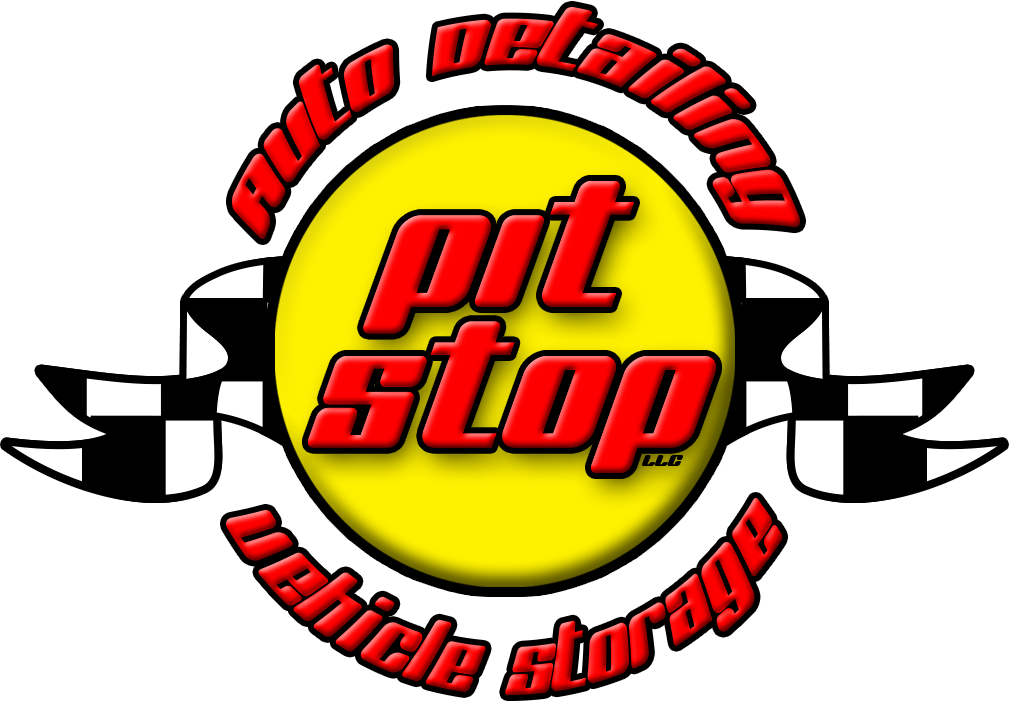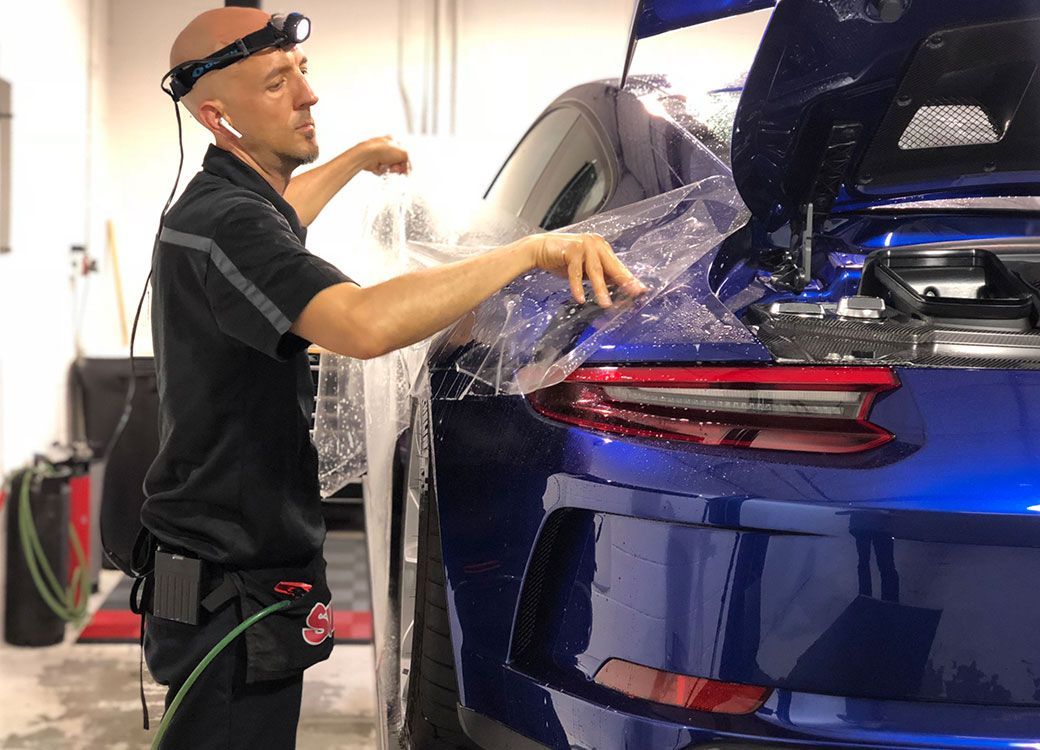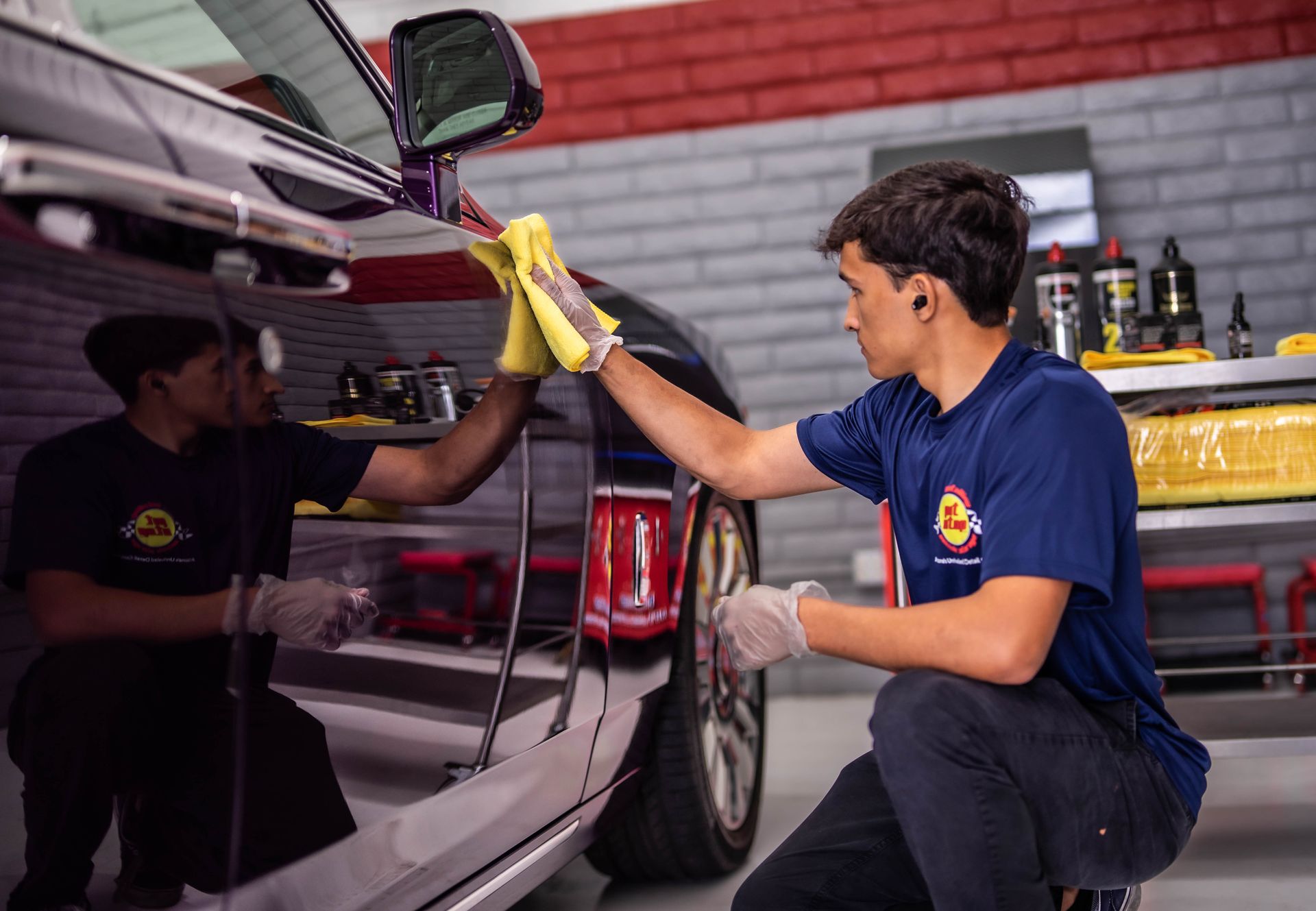How PPF Service Can Preserve Your Car's Value Over Time
GET A FREE ESTIMATE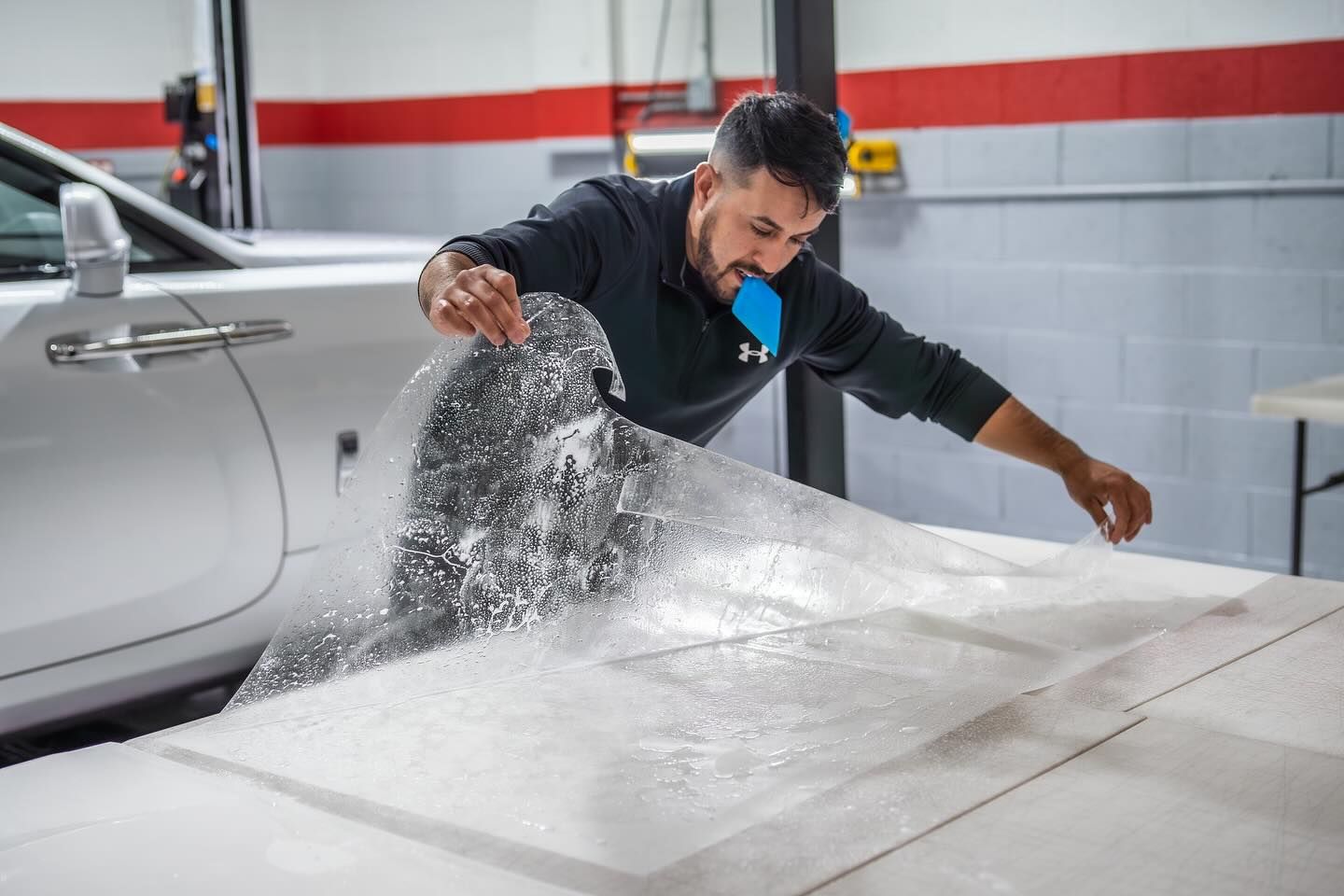
If you're like most car owners, you want your vehicle to look great and hold its value over time. But the truth is, everyday driving can take a toll on your car’s appearance. Paint Protection Film (PPF) can help with it. It not only keeps your car looking as fresh as the day you bought it but also acts like a shield against dirt and harmful UV rays.
In this article, we will dive into how PPF works and why investing in this protective layer might just be one of the best decisions for your vehicle. Whether you're planning to hold onto your car for years or thinking about reselling it down the line, understanding the benefits of PPF could change how you view vehicle maintenance forever.
How PPF Protects Your Vehicle
The protective qualities of PPF are nothing short of impressive. Serving as a transparent barrier, it provides your vehicle with a multi-layered defense against an array of environmental threats. One of the most significant benefits lies in its environmental protection properties.
Think about it: every time you drive, your car faces harsh sunlight that can fade and deteriorate the paint over time. Beyond UV rays, pollutants like bird droppings, tree sap, and road salts can wreak havoc on your car’s exterior. With PPF applied, your vehicle is shielded from these potential disasters, saving you from costly repairs and maintaining that showroom shine.
Environmental Protection
PPF acts as a proactive shield against elements that can lead to degradation. By absorbing impacts from substances that would typically cause staining or corrosion, this film keeps your paint intact longer, retaining the car's aesthetic appeal.
For example, bird droppings aren't just unsightly; they are acidic and can permanently damage your paint if not cleaned promptly. Because PPF forms a flexible barrier over those vulnerable surfaces, it mitigates the risk significantly. Vehicles with PPF enjoy optimal protection against elements that threaten their exterior beauty.
Mechanical Protection
When it comes to mechanical protection, PPF truly shines by defending against everyday wear-and-tear that vehicles face on the road. Road debris, whether it's small stones or gravel tossed up by fellow drivers, can lead to ugly nicks.
With advanced PPF formulations available today, you gain not only a protective covering but also a self-healing property. This means that environmental contaminants will often disappear with exposure to heat from the sun or hot water, making routine maintenance even easier.
This self-healing capability ensures your vehicle remains pristine longer while reducing your need for additional upkeep.
Preserving Original Paint with PPF
Maintaining the original paint of your vehicle is crucial for both aesthetic appeal and resale value. The installation of Paint Protection Film (PPF) acts as this invisible armor, safeguarding your car against various damaging elements while keeping its finish pristine. One of the primary reasons vehicle owners opt for PPF is its impressive chemical resistance.
Chemical Resistance
High-quality PPF is designed to be chemically resistant, meaning it doesn’t react adversely with common pollutants encountered on the road. Imagine driving through rain only to find out that droplets containing oil, road salt, or acid from bird droppings have left their mark on your car’s surface. Fortunately,
PPF helps mitigate these unwanted effects. A strong layer of PPF prevents stains from oil, gasoline, and even acidic substances like bird droppings or tree sap from seeping into the paintwork, which keeps it looking fresh and spotless over time.
This protective barrier also shields against UV rays that can cause fading, allowing the vibrant colors to shine through without losing their luster.
Aesthetic Integrity
One of the standout features of PPF is that once it’s applied correctly, it's nearly invisible. For car enthusiasts and everyday drivers alike, this means you can keep the original look of your vehicle uninterrupted while enhancing it simultaneously. The film provides a glossy finish that complements the factory paint rather than detracts from it—so not only does it protect but also adds a layer of beauty and sophistication. Many owners notice their cars retain that showroom appearance long after leaving the dealership.
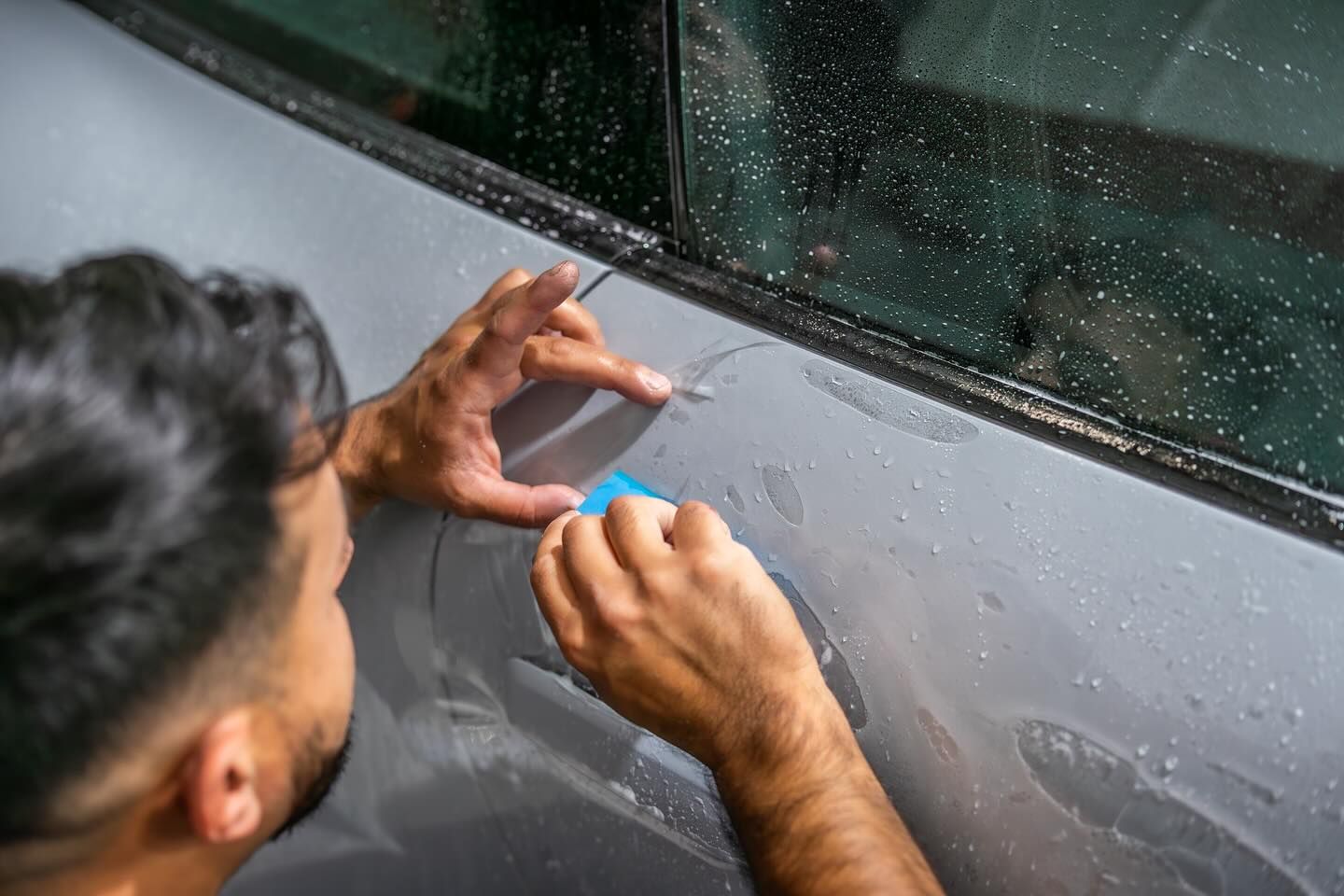
Professional vs. DIY PPF Installation
Deciding how to install Paint Protection Film (PPF) involves weighing your options between professional installation and a do-it-yourself approach. While the thought of saving some cash with a DIY kit might be tempting, it’s crucial to evaluate the possible implications.
Professional installers have specialized tools and extensive experience in applying PPF, leading to flawless installations that are bubble-free and aligned perfectly. At Pit Stop Auto Detailing & Vehicle Storage, our experts use meticulous procedures to ensure that every inch of vulnerable surface is covered, offering comprehensive protection against road debris.
Professional Installation
The key advantage of opting for professional installation lies in quality assurance. Professionals typically use precision tools and techniques that effectively adhere the film without any unsightly imperfections. This prolongs the film's life and guarantees that it operates at its best.
An experienced team will accurately assess your vehicle’s areas that are most susceptible to damage, such as the front bumper, hood, and side mirrors, ensuring those regions receive the best coverage possible. Furthermore, professionals often provide warranties for their work; should any issues arise during the warranty period, you can have peace of mind knowing they will resolve them at no extra charge.
Despite the benefits of professional installation, some car enthusiasts gravitate toward DIY methods.
DIY Installation
While DIY kits often come at a lower initial cost, they carry greater risks of improper application that can severely compromise the film. Even with all instructions followed meticulously, mistakes can happen—trapped air bubbles or uneven edges may form during installation, leading to aesthetic disappointments that diminish the benefits of PPF altogether.
Additionally, inexperienced individuals may stretch or tear the film when trying to work with it, ultimately increasing expenses if replacement materials need to be purchased.
So while the allure of a budget-friendly project exists, consider whether you're equipped with the skills and tools required for a successful installation before diving in.
Long-term Resale Value Benefits
Properly applied Paint Protection Film (PPF) does more than just keep your vehicle looking pristine; it plays a crucial role in significantly enhancing its resale value. One of the most compelling aspects of PPF is how it maintains the car's appearance over time, making it far more attractive to potential buyers. This aesthetic appeal often translates directly into higher selling prices. According to a recent study, vehicles with minimal paint damage can fetch 10-15% more on the market compared to similar models that show signs of wear.
Imagine walking into a dealership or meeting a buyer and seeing their eyes light up at the flawless finish of your car—that’s the power of PPF.
Market Advantage
The competitive landscape of used cars means that every detail matters, and one significant advantage of having PPF installed is its ability to drastically enhance your vehicle's market position. A protective film makes cars look newer and shows buyers that they've been well maintained. Buyers are easily swayed by visuals, and an immaculate exterior sends a strong message about the overall condition of the vehicle. Consequently, the investment made in protective film pays dividends when it comes time to sell.
Furthermore, best practices in automotive care indicate that vehicles protected by PPF are less exposed to common culprits that contribute to paint deterioration—like rock chips, bird droppings, road salts, and UV rays. These factors can wreak havoc on paint jobs, leading to costly repairs or even repainting before selling. Understanding how preventative measures like PPF can save money and enhance outlines the long-term value proposition that few owners realize until they're ready to sell.
Long-term Savings
While the upfront cost of installing PPF may seem high depending on coverage area, it's essential to view this as an investment rather than just an expense. The reduction in necessary expenditures for paint correction and minor repairs over time can be staggering. This is particularly true when you consider how frequently these repairs can occur without PPF.
When considering PPF, many owners overlook its capability of eliminating environmental contaminants. After several years, those savings add up—not to mention the added peace of mind knowing that your vehicle is equipped with protective armor against the rigors of daily driving.
Evaluating Quality and Durability of PPF
When selecting a Paint Protection Film (PPF), knowing what to look for can be a game changer. Not all films are created equal, which is essential when you're aiming to preserve your vehicle's aesthetics and value. High-quality films possess specific attributes that reflect their effectiveness and longevity.
Quality Indicators
It's crucial to pay attention to certain aspects that distinguish top-tier PPF from lesser options. Start with thickness, typically measured in microns. Generally, the thicker the film, the better the protection it offers against environmental hazards. A thickness range between 6 and 8 mils is commonly considered standard for premium films. This thickness directly correlates with durability.
Aside from thickness, let's talk about self-healing properties. High-end PPFs can mend wear and tear when exposed to heat—whether from sunlight or engine warmth—which means that small imperfections can disappear without needing any extra effort. This feature not only keeps your car looking pristine but also extends the life of the PPF itself.
Lastly, consider warranty terms. Extended warranties indicate confidence in a product’s effectiveness and longevity. A manufacturer willing to back up its film with a lengthy warranty reflects a commitment to quality, ensuring you don't need to fret about deteriorating protection over time.
Durability Testing
The benefits of choosing a high-quality PPF go beyond just appearance; they undergo rigorous testing for performance under extreme conditions. Whether it's battling temperature fluctuations, consistent UV exposure, or mechanical abrasions from daily driving, premium brands have tested their products to withstand real-world challenges. Imagine taking an off-road trip or driving through harsh weather; you want to ensure your vehicle's paint is protected against everything nature throws at it.
These durability tests confirm that a particular film's composition remains intact while maintaining clarity and aesthetic appeal over the long haul. Investing in a reputable product means choosing peace of mind, knowing your vehicle is armored against wear and tear.
Practical Tips for PPF Maintenance
Proper maintenance ensures that your PPF continues to shield your vehicle effectively from environmental hazards.
The first step involves gentle cleaning. It may seem straightforward, but using the right supplies can make a world of difference. To clean the PPF-covered surfaces, always resort to a microfiber cloth paired with a mild detergent specifically designed for car care. This combination works wonders while being gentle on the film. Harsh chemicals and abrasive tools can degrade the film's surface, leading to unsightly damage that defeats its purpose. Regularly washing your car every one to two weeks helps maintain the film's clarity and protective qualities, enabling it to do its job diligently.
Once you’ve established a routine for cleaning, the next crucial aspect is regular inspection of your PPF.
Conducting periodic inspections allows you to identify wear and tear early on. Pay close attention to areas where issues are likely to appear, like the edges of the film. Small problems like edge lifting can, if caught early, be quickly addressed with minimal intervention. By being proactive about inspections, you can prevent minor inconveniences from becoming costly repairs down the line.
After inspections, consider how professional maintenance can enhance the lifespan of your PPF.
Scheduling annual professional inspections is an invaluable practice for any vehicle owner serious about maintaining their investment. Qualified technicians at Pit Stop Auto Detailing & Vehicle Storage are adept at spotting potential issues that might escape an untrained eye. Their expertise encompasses identifying existing problems and fixing them efficiently, ensuring your PPF remains in top condition. Professional touch-ups and treatments can restore the film’s protective capabilities and enhance its longevity, safeguarding your vehicle from road hazards effectively.
When you invest in PPF, following these maintenance tips—gentle cleaning, regular inspections, and professional support—will significantly amplify its effectiveness and longevity. Every effort helps protect your vehicle’s paint and preserve its value for years to come. Contact Pit Stop Auto Detailing & Vehicle Storage at
(480) 584-6115 to
schedule an appointment today!
